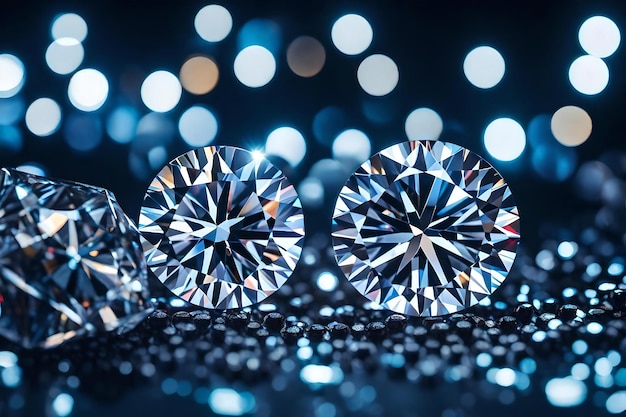Have you ever been mesmerized by the twinkling lights of fireflies on a summer night? Or perhaps you’ve seen the ethereal glow of jellyfish drifting through a moonlit ocean? These captivating displays are all thanks to bioluminescence, a natural phenomenon where living organisms produce their own light. It’s a dazzling spectacle, but the “réponse” behind it is even more intriguing.
This article will take you on a fascinating journey into the world of bioluminescence. We’ll delve into the science behind this process, explore the diverse creatures that utilize it, and uncover the many purposes it serves. Buckle up, because we’re about to shed light (pun intended!) on the secrets of bioluminescence!
Ever wondered why fireflies glow or how anglerfish lure prey? Dive into the fascinating world of bioluminescence, nature’s built-in nightlight! Explore the “réponse” behind this dazzling phenomenon and the creatures that use it.
How Does Bioluminescence Work?
The light show doesn’t happen by magic (although it might seem that way sometimes!). Bioluminescence is a complex biochemical reaction. Here’s the gist: inside bioluminescent organisms, there’s a molecule called luciferin. When luciferin reacts with oxygen, with the help of an enzyme called luciferase, it releases energy in the form of light. Think of it like a chemical glow stick!
The colors produced by bioluminescence can vary greatly depending on the specific type of luciferin and luciferase involved. Some creatures emit a cool blue light, while others glow a vibrant green or even a reddish hue. This dazzling diversity adds to the captivating nature of bioluminescence.
Who Rocks the Glowing Look? A Bioluminescent Bestiary!
Bioluminescence isn’t limited to just fireflies and jellyfish. It’s actually found in a wide range of creatures across the animal kingdom, from the depths of the ocean to the tops of trees! Here are some fascinating examples:
- Fireflies: These beloved insects use their flickering light to attract mates and communicate with each other.
- Anglerfish: Living in the inky blackness of the deep sea, these fish have a bioluminescent lure dangling from their head that attracts prey like a beacon in the night.
- Deep-sea squid: These clever creatures use bioluminescent organs to create a mesmerizing light show that confuses predators, giving them a chance to escape.
- Plankton: Tiny, bioluminescent plankton illuminates the ocean depths, creating a mesmerizing spectacle known as “bioluminescent surf.”
- Glowworms: These fascinating insects light up caves and forests with their ethereal glow, attracting prey and mates.
This is just a small sampling of the amazing bioluminescent creatures out there!
Why Do Creatures Glow? Unveiling the “Réponse”
There are many reasons why creatures have evolved to be bioluminescent. Here are some of the most common ones:
- Attracting Mates: Bioluminescence can be a powerful tool for attracting a mate. Firefly flashes and anglerfish lures are all about catching the eye (pun intended) of a potential partner.
- Communication: Some creatures use bioluminescence to communicate with each other. For example, some deep-sea fish use light flashes to warn each other of danger.
- Defense: Some bioluminescent organisms use light to startle or confuse predators, giving them a chance to escape.
- Camouflage: Believe it or not, some creatures use bioluminescence to camouflage themselves! By matching the light from their surroundings, they can blend in and avoid predators.
- Finding Food: Anglerfish aren’t the only ones who use bioluminescence to lure prey. Some deep-sea creatures use light to attract smaller organisms, which they then devour.
Bioluminescence: A Glimpse into the Future?
Bioluminescence isn’t just a cool party trick for nature’s creatures. Scientists are increasingly studying this phenomenon for potential applications in our own world. Imagine using bioluminescent organisms to create energy-efficient lighting systems or developing bioluminescent markers for medical research. The possibilities are truly exciting!
Frequently Asked Questions (FAQs) about Bioluminescence
- Is bioluminescence the same as biofluorescence? No, they’re not the same. Bioluminescence involves living organisms producing their own light, while biofluorescence involves an organism absorbing light and then re-emitting it at a different wavelength.
- Can humans be bioluminescent? Not naturally, no. However, some scientists are exploring the possibility of using bioluminescent bacteria to create glowing tattoos or other applications.
- Are bioluminescent creatures harmful? Most bioluminescent creatures are not harmful to humans. In fact, many of them live in the deep sea where we’re unlikely to encounter them. However, there are a few exceptions, such as some types of bioluminescent jellyfish that can deliver a sting.
- Can you see bioluminescence in real life? Absolutely! Bioluminescent plankton can be seen at night along coastlines, creating a magical “glowing beach” effect. Firefly displays are also a common sight in some parts of the world. If you’re interested in seeing bioluminescence up close, consider joining a nighttime kayaking or boat tour in areas known for bioluminescent creatures.
Conclusion
The world of bioluminescence is a fascinating one, filled with glowing creatures, dazzling light shows, and ingenious adaptations. As we continue to explore this phenomenon, the “réponse” to its secrets unveils a deeper understanding of the natural world and opens doors to exciting new possibilities. So next time you witness a firefly’s twinkle or see images of the ocean depths illuminated by bioluminescent creatures, remember the incredible science and hidden stories behind this captivating display of nature’s ingenuity.









